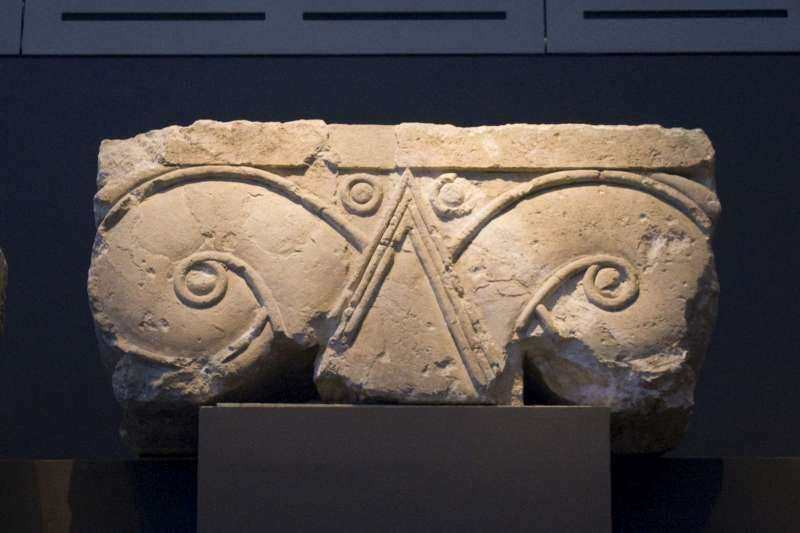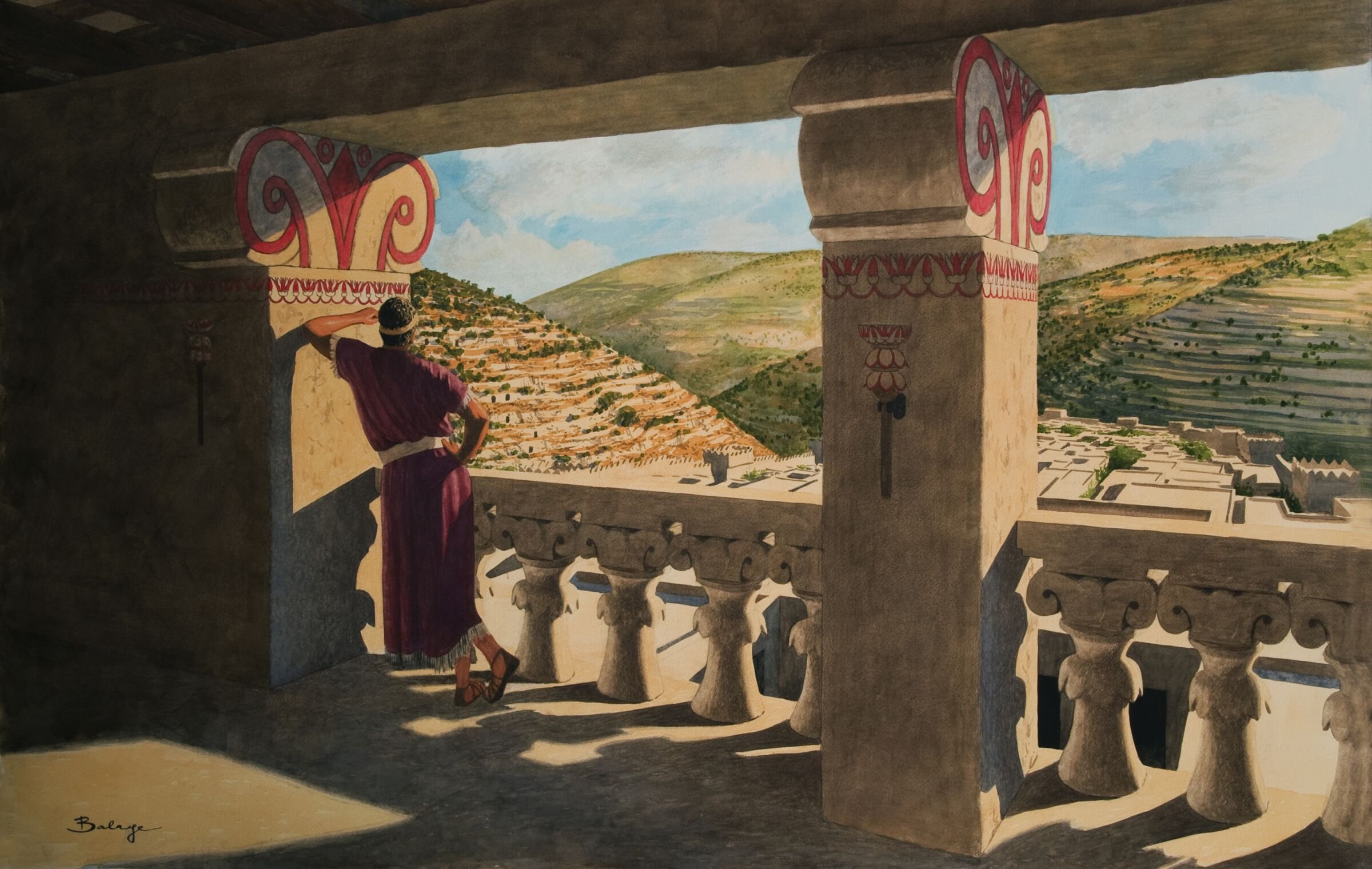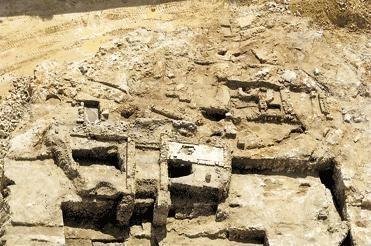What's in a Name?
/O Romeo, Romeo, wherefore art thou Romeo?
Deny thy father and refuse thy name.
Or if thou wilt not, be but sworn my love
And I’ll no longer be a Capulet.
‘Tis but thy name that is my enemy:
Thou art thyself, though not a Montague.
What’s Montague? It is nor hand nor foot
Nor arm nor face nor any other part
Belonging to a man. O be some other name.
Her agony propels on, and her harrowing cries persist...
What’s in a name? That which we call a rose
By any other name would smell as sweet;
So Romeo would, were he not Romeo call’d,
Retain that dear perfection which he owes
Without that title. Romeo, doff thy name,
And for that name, which is no part of thee,
Take all myself.
In one of the most famous lines. Written by one of the most famous poets. Uttered by one of the most famous female protagonists. Dreamt up in one of the most beautiful scenes. Exhibited in one of the most timeless tragedies is Juliet, perched up on the balcony pining over her new lover. She is a fair beauty. She is a Capulet, and she has fallen in love with a man who bears the name of her families’ sworn enemy.
What’s in a name? She cries, arduously in a painstakingly attempt to convince herself that a name is nothing but a name. That it is a convention with no meaning behind it. That the naming of things is irrelevant. Juliet is disillusioned however - given she has found herself in a predicament. She was in love with Romeo, and Romeo was a Montague, and she was a Capulet. These - the names of the heads of two feuding families - entrenched in blood and bitter hatred toward one another. Their love was a forbidden one that had flourished like a rose in the bush filled with thorns and thistles.
Like the rose, Romeo would be as sweet on his own had he another name?
So, as the idiom goes – what’s in a name?
When a child is born, the infants parent’s give that child a name. Pets, streets, suburbs, cities and countries are all given names. Most things around us have a name. But if naming is of no importance, as Juliet seems to indicate, then does the name become insignificant? Is it not we who accords weight to names and to provide them with a value?
In Biblical times, names were indeed quite significant and very intentional. Adam, the first man, is likely to be derived from the Hebrew “ground” as a reminder that he was fashioned from the ground’s dust (Genesis 2:7). Likewise, “Eve” means “living” to venerate her as “mother of the living” (Genesis 3:20).
In the Book of Genesis, we can see from the very beginning how names play a pivotal role in the tone of the postliminary texts that would follow. God sets the precedent when he grants the first humans with the task of naming the animals around them.
Now the Lord God had formed out of the ground all the wild animals and all the birds in the sky. He brought them to the man to see what he would name them; and whatever the man called each living creature, that was its name (Genesis 2:19).
Adam then proceeds to name each living creature and then that was its name. So, the man gave names to all the livestock, the birds in the sky and all the wild animals (Genesis 2:20).
Why on earth would God grant this brand-new human with such a mammoth and permanent task?
I mean, he’s the one who created them?
Why wasn’t it God who did the naming?
The text wants to emphasise that Man, in Genesis, has the power to name.
The power to name is the power to know.
Reality becomes intelligible to us through words. If I say, “what’s that?” and one doesn’t have a name for it, then how will one respond? You will say, “I don’t know?” If you don’t have a name for it, then you will not know how to respond. So, Adam, in the book of Genesis, has power over these things to name them - which means to make them intelligible to himself so that he can know. He draws from the source of knowledge within himself that provides the means and power to name that which is outside of him, so that he might embody them by naming them.
In other traditions, the creation story recounts that man - nor the angels - nor any other created creature has the capacity to name or to know other than that which has been revealed to them through a higher power. In these traditions, it is not man who has been tasked with the naming of things. Nor is it the task of any other creature. The power to name things lies solely on a supreme being. The stories remove the core capacity and of the innate ability for man to know things, which is to say, that he lacks reason. It wants to say that man is not capable of apprehending reality independent of a direct revelation from that supreme being.
The latter conception - however - is flawed. As humans, we have the capacity to apprehend reality outside of us because we are able to know. We understand that we have within us this innate ability to reason as we have been imbued with this supreme power; that which differentiates us from other creatures. And the way that we can know and apprehend reality is through naming. It is through naming that we can know.
The Bible, from Abraham to Peter, continues on with this theme of names that correspond to some sort of significance. Abram, whose name was changed to ‘Abraham',’ which means father of the multitude has his name changed to signify his new role. Likewise, Simon, whose name means “that who hears or that who obeys,” has his name later changed to “Peter,” which means rock. This change in name corresponds to his new mission, which has been heeded unto him a special task; a name highlighting his new purpose.
The question then becomes, if naming is important, how do we reconcile Juliets impasse? How could the sweet fruit of two lovers be forbidden to them due the force of a wedge, which is a name?
Juliet’s impassioned speech might have contended that a name is nothing; that it has no convention and no meaning behind it. This may be true in the case of Romeo. He may well be as sweet as a rose. He may be as sweet as honey or as sweet as dew. He may be nothing like the prejudice that has befallen upon him or his family. But whether this young couple likes it or not, their names hold weight – their names are filled with all sorts of connotations that will make it difficult for the two to fall in love in peace, and which will ultimately lead to their tragic deaths.
In an idealistic cosmos, their names would have been unimportant. They would have fallen in love. Married and had many children together and died in their old age; living a fulfilled and rich life. But we do not always live in a romantic and utopian world - the naming of things can be extremely consequential. Naming things could lead to prejudice, but it also leads to familiarity. To intimacy. To history.
This is why the naming of our practice was something that we understood needed to be meaningful. It needed to be significant. Consequential. It needed to hold a legacy.
So, now we move on to the question of: what is in our name?
For that we will need to go back thousands of years. In ancient times - from out of the bronze age - there emerged a company of people who lived in the near east along the coast of the Mediterranean. Nestled between the mighty snow peaked mountains, the glorious cedar forests and the coast of the Mediterranean, resided a unique group of city dwellers - one of the first.
They tamed the high seas. They were known for their pioneering naval capabilities. They developed an expansive maritime trade network. They revolutionised and democratised literacy. The contributed remarkable feats in architecture and engineering. Their interactions with other ancient civilisations would be extremely influential and extend far beyond their homeland. They would, in turn, be instrumental in leaving an indelible mark on the course of human history,
Who were they?
They understood themselves early on as "Kenaʿani", meaning 'Canaanites'.
The Bible referred to them by their city states such as Tyrians, Sidonians or Byblioians.
The Egyptians labeled them as “fnḫw,” - “Funwa”
The Romans would refer to them as “Punic.”
But the Greeks would give them the name; the name that would stick and set them apart from those in the region.
They were: The Phoenicians
Carolina Lopez-Ruiz in her book, Phoenicians and the making of the Mediterranean says, “The Phoenicians emerged 1000 BC as a distinct group among those who broke off from the common Syro-Palestinian Canaanite background of the Late Bronze Age. These groups included Phoenicians, Israelites, Moabites, Ammonites, Edomites, and Aramaeans. They had distinct languages, distinct scripts that stemmed from the Phoenician one, and distinct cultures and religious systems, functioning as discrete ethnic groups against a shared distinct background.
...there is some evidence that they may have used the terms “Canaan/Canaanite” as a self-referent. The name was used by the Canaanites of Phoenician cities in (Tyre, Sidon) in the Amarna Letters at least when corresponding with others. Cn’ Cn’n, and a derived form kinahhu Akkadian, was a West semitic name for Syria-Palestine deployed amply since the Bronze Age (we have testimonies in Akkadian, Hittite, Hurrian, Egyptian, and Hebrew)., probably meaning “sunset land/west” (like “occident’), the same meaning as the Amurru/Amorites used for the region too. The terms were also tied in Akkadian and other languages to the purple dye/colour associated with the specialised technology and with Canaan. The Greek name phoenix, in turn, means “purple/red” and also “palm tree”). And already appears in association with this industry in Mycenaean texts.”
As mentioned by Carolina, the root word for “Phoenician” is the Greek phoinikē, meaning “purple red,” referring to the famous purple dye that they developed using the Murex snail - one of their defining luxury craftsmanship goods - a colour reserved for royalty.
This is what they would be primarily known for in name.
A hallmark of ancient Phoenician culture, however, was not only their famous “purple dyed garments,” but they were also known for their high-quality craftsmanship and skill in commerce.
Homer wrote in the Iliad of their fine craftsmanship. He says, “far exceeded all others in the whole world for beauty; it was the work of cunning artificers in Sidon, and had been brought into port by Phoenicians.”
The Phoenicians were famed in antiquity for their ship-building skills, and credited with inventing the keel, the battering ram on the bow, and caulking between planks.
The accomplishment in maritime craftsmanship was also evident in their architectural and engineering prowess. Phoenicians were known for their skilled architects, engineers, builders, artisans and craftsmen. They designed and built great temples and cities. The scale, complexity at which they were capable of building, as well as with their renowned maritime trade networks, access to valuable resources and advanced architectural and engineering knowledge provided the necessary skills and resources to design and construct some of the most iconic structures of the ancient world.
The king of Tyre, one of the most powerful Phoenician city-states, would send workers and cedar wood first to help David build his palace (2 Samuel 5:11) and later to support Solomon's construction of the First Temple.
“Now Hiram king of Tyre sent envoys to David, along with cedar logs and carpenters and stonemasons, and they built a palace for David.” (2 Samuel 5:11).
"And Hiram king of Tyre sent his servants unto Solomon; for he had heard that they had anointed him king in the room of his father: for Hiram was ever a lover of David" (1 Kings 5:1)
The Proto-Aeolic capital, an invention and feature of Phoenician architecture would inform the principles of ancient classical conventions. The ‘Proto-Aeolic’ Capital was a Phoenician brainchild that would become the prefix to pave the way for the Ionic capital and the other Greco-Roman capitals and features.
Furthermore, Phoenician artisans were skilled in wood, ivory, and metalworking, as well as textile production that complimented their architectural masterpieces. In the Old Testament (2 Chronicles), the master craftsman Hiram of Tyre was commissioned to build and embellish the temple of Solomon in Jerusalem. Homer’s Iliad describes a prize at the funeral games of Patroklos as a mixing bowl of chased silver—“a masterpiece of Sidonian craftsmanship” (Book 13). It also mentions that the embroidered robes of Priam’s wife, Hecabe, were “the work of Sidonian women” (Book 6).
Perhaps the most significant contribution of the Phoenicians, many of which are too long to list here, was the alphabetic writing system (they created the first alphabet) that became the root of the semitic and western alphabets that would eventually be adopted by the Greeks. A stroke of genius and innovation that democratised literacy for the non-elites.
The contributions of these great people cannot be understated.
Though there have been hundreds and thousands of years of silence on the subject, Archeologists and new feats in technology are beginning to help unravel the mystery of these enigmatic peoples.
Given the extraordinary contribution this group of peoples bestowed upon the world - the question then becomes - why have we only recently begun to scrape the surface of this rich heritage?
In the prologue to the film adaption of the Lord of the Rings, Galadriel, Queen of Lorien, acknowledging the strange events taking shape between the First and Third Ages of Middle-Earth, perhaps explains this phenomenon more poignantly when she opens the film with this monologue:
“The world is changed
Much that once was is lost
For none, now live, who remember it.
History became legend
Legend became myth
And some things that should not have been forgotten have been lost.”
In this case, the forgotten name of the Phoenicians has led to a lack of familiarity, of intimacy and has put a hole in the history not only for the descendants of the Phoenicians, but for the history of humanity.
The Phoenicians and their true identity have been lost. Their legacy has been reduced to myth and in some cases, false propaganda by their adversaries.
This is the reason that naming is so important.
Which is why we have appointed this name for our practice.
We seek to make that which was once was lost, found.
In the proto-Aramaic or ancient Phoenician we can break down the name in the following way:
El – Lord, and/or honoury title
Achi – Brethren, kinship, brothers
The El-Achi family once ruled the cedar filled forested mountains of Ehden.
Ehden, another important name and component to the story.
Ehden: a proto-Aramaic or Phoenician name for Eden (paradise) and also means the base of the mountain. It is located at the base of Mar Sarkis Mountain, which supports this explanation.
To date, Ehden’s name remains a subject of scholarly arguments. Some stipulate that it derives from Adon (Adonis) meaning “power, stability, and tranquility.”
Others insist that the name is actually the same Eden mentioned in the Bible. Patriarch Estephan El Doueihi (1630-1704), a beloved son of Ehden, explains that theory in a booklet which The Vatican has in its possession.
Nevertheless, the El-Achi’s were given the title to be faithful custodians and stewardesses of their kinsmen, their brothers, their peoples, of this slice of paradise and the valuable cedar forests that would be instrumental in shaping ancient civilisation. These cedar forests, which are described in the bible to be planted by God Himself, would perform an integral role in the history of the Phoenician peoples, the Mediterranean and subsequently, the rest of the world.
Their legacy was weakened when Alexander the great sieged the city of Tyre. When the Romans destroyed the city colony of Carthage. Their legacy has been assaulted time and again from invaders of all sorts; from the Assyrians to the Ottomons. From modern day imperial ideologues to greedy developers - all these and many more have sought to and continue to seek to erase the rich history and memory of the people of this coastal and mountainous region.
But her memory will not be forgotten as long as the fire of the flame of her name remains alight in her descendants.
Through our name, we seek to reignite that flame.
We seek to honour those ancestors who came before us and carry on that very legacy.
We seek to reverence this rich heritage in design and craftsmanship and honour that tradition because we believe it is within our blood.
It is in our DNA.
It is in our relationship to our mythical cedar trees - from our mountains and to the shores - which extends beyond the high seas.
As Juhani Pallasmaa, in his book The Eyes of the Skin: Architecture and the Senses says, “Architecture is essentially an extension of nature into the man-made realm, providing the ground for perception and the horizon of experiencing and understanding the world. It is not an isolated and self-sufficient artifact; it directs our attention and existential experience to wider horizons…”
Our cedar forests served as that extension.
What is in a name?
In this case, it is everything. Whilst the history might be sketchy and filled with bias, we see it as our responsibility to take the value given to us by the Phoenicians and her cedars and to persevere with those provisions. To shine a light, through our name and continue on the benefaction of a peoples who gave the world so much, but that which has been reduced to the rubble both literally and metaphorically.
It is the reminder of the high bar that we strive to achieve in excellence, craftsmanship and quality.
Yes, a name can be wrought with extraneous enmity.
But it can also serve as a reminder of the exceptional lost endowment.
It is our wish to carry on the custom of the mastery they gifted to the world.
And to continue to pass it on.
We see it as our duty to break free from the shackles of the ignorance of history
And we seek to do that through our Phoenician name.
To carry on what our ancestor did.
To be an embodied reminder so as not to lose any more precious time in forgetting.
For as Plutarch says, “To be ignorant of the lives of the most celebrated men of antiquity is to continue in a state of childhood all our days.”
The Mountains and mythical cedar forests of ehden during the winter
Clearing cedars for Solomon’s temple by Gustave Doré
Proto-Aeolic capital discovered in the City of David
The Israel Museum, Jerusalem, by Amalyah Oren
City of david: King David looking over jerusalem from his palace
An ancient Phoenician port has recently been discovered in Mina El Hosn area of Beirut, in a plot (#1893) located behind the Hotel Monroe. The area of approximately 7500 square meters is owned by Venus, a real estate firm that plans to erect 3 large skyscrapers on the terrain.







